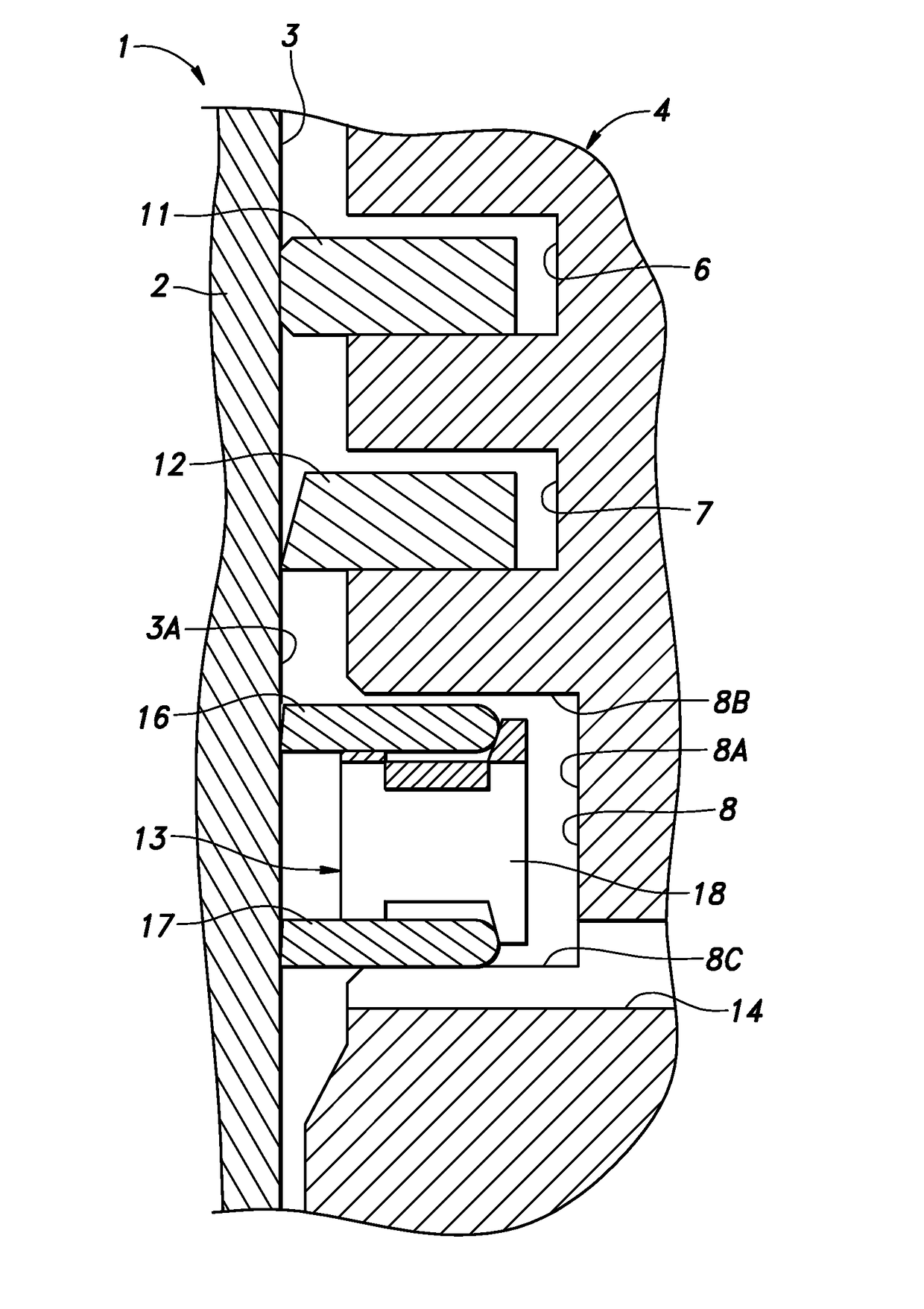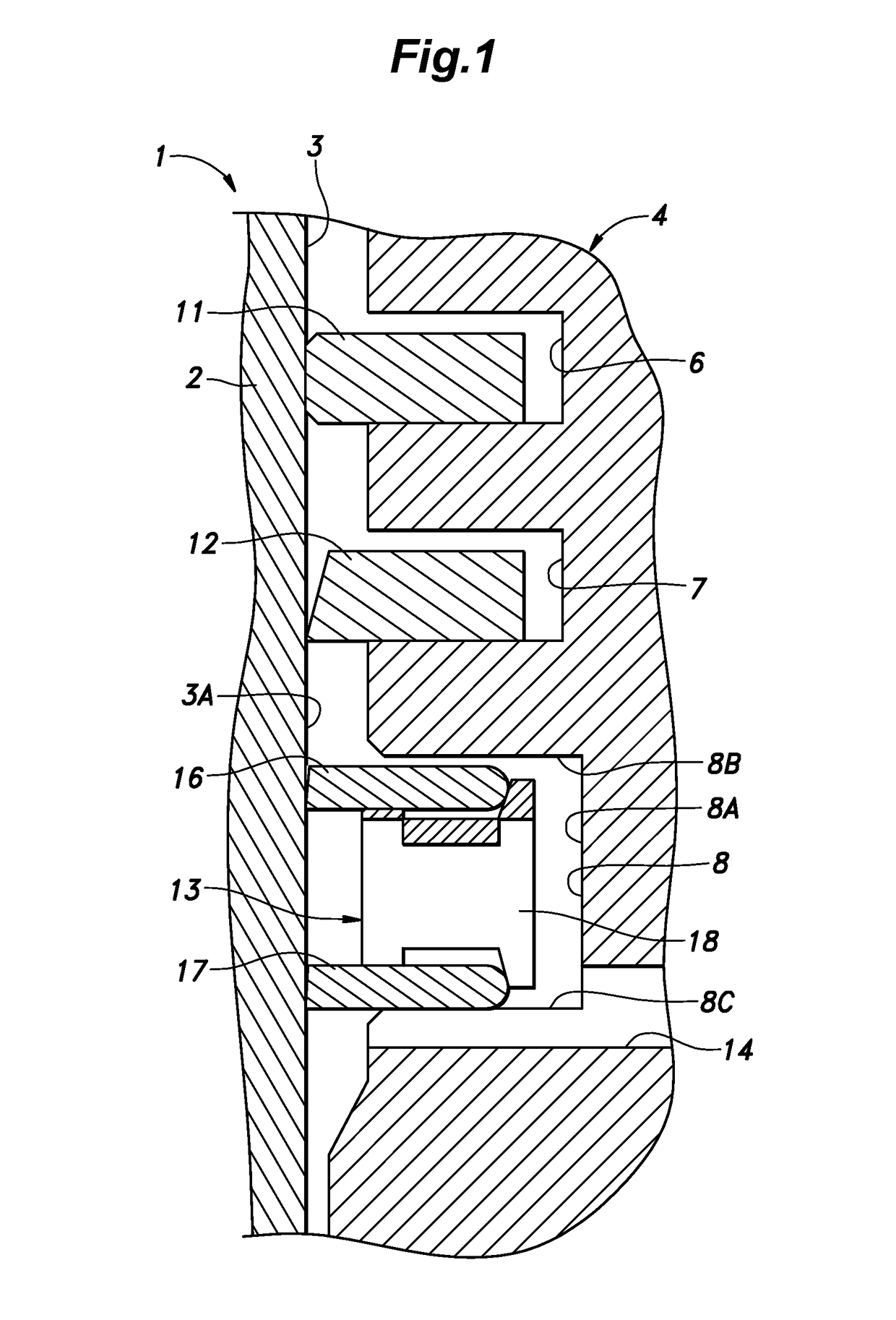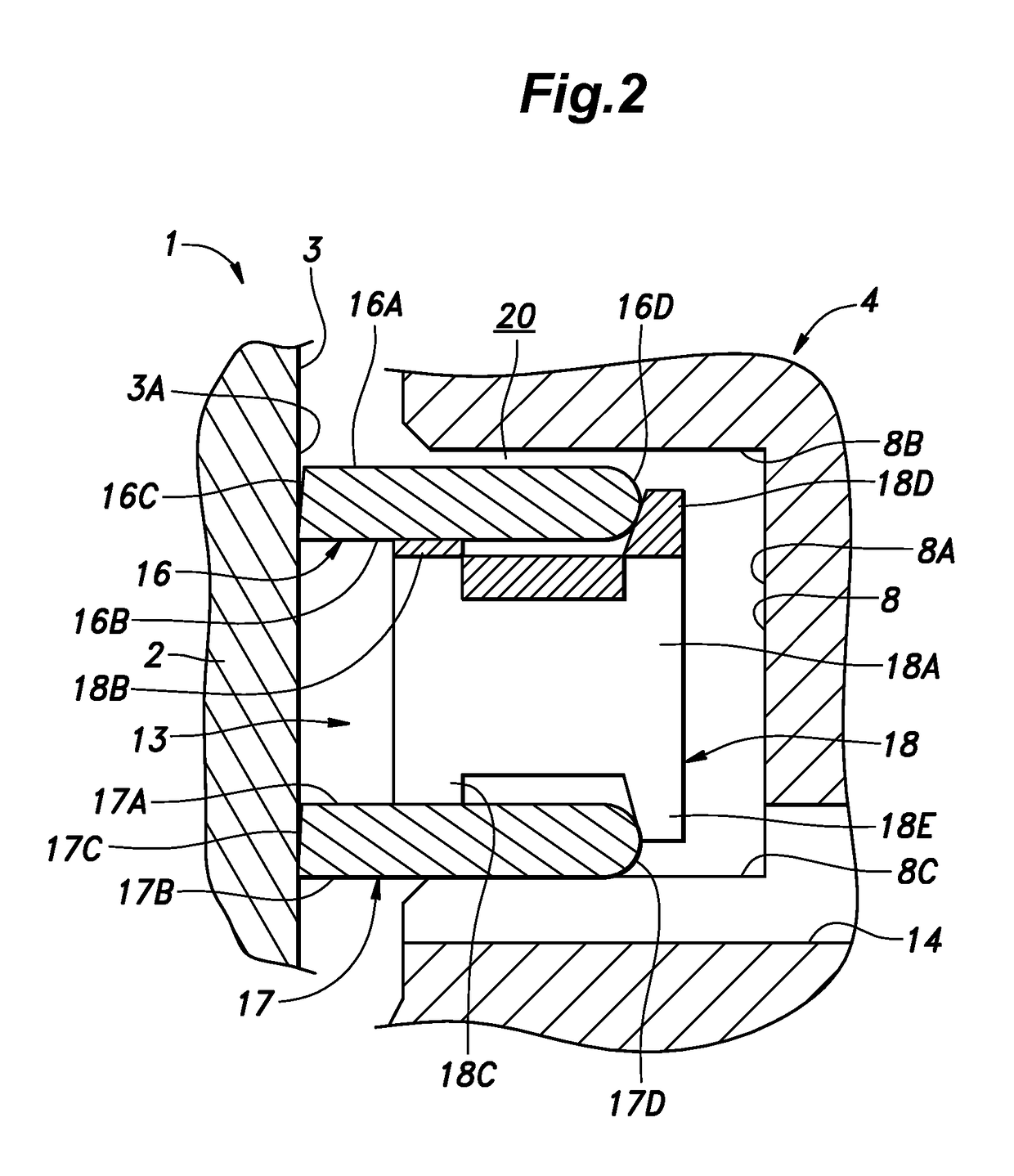Piston assembly
a technology of pistons and cylinders, applied in the direction of piston rings, mechanical devices, engine components, etc., can solve the problems affecting the oil control function and the pressure of the oil ring on the cylinder wall surface cannot be reduced beyond a certain limit, so as to achieve the effect of reducing the friction resistan
- Summary
- Abstract
- Description
- Claims
- Application Information
AI Technical Summary
Benefits of technology
Problems solved by technology
Method used
Image
Examples
Embodiment Construction
)
[0024]An oil ring embodying the present invention is described in the following with reference to FIG. 1.
[0025]As shown in FIG. 1, a cylinder block 2 of an internal combustion engine 1 is provided with a cylinder 3 having a circular cross section and extending along a prescribed axial line (which is assumed to be extending vertically for the convenience of description), and a piston 4 is slidably received in the cylinder 3. A combustion chamber is defined by an upper part of the cylinder 3, the top surface of the piston 4 and a cylinder head not shown in the drawing. The outer peripheral part of the piston 4 is formed with a first ring groove 6, a second ring groove 7 and a third ring groove 8, in that order from the top. Each of these ring grooves is annular in shape. The first ring groove 6 and the second ring groove 7 receive a first pressure ring 11 and a second pressure ring 12, respectively, and the third ring groove 8 receives an oil ring 13.
[0026]The third ring groove 8 inc...
PUM
 Login to View More
Login to View More Abstract
Description
Claims
Application Information
 Login to View More
Login to View More - R&D
- Intellectual Property
- Life Sciences
- Materials
- Tech Scout
- Unparalleled Data Quality
- Higher Quality Content
- 60% Fewer Hallucinations
Browse by: Latest US Patents, China's latest patents, Technical Efficacy Thesaurus, Application Domain, Technology Topic, Popular Technical Reports.
© 2025 PatSnap. All rights reserved.Legal|Privacy policy|Modern Slavery Act Transparency Statement|Sitemap|About US| Contact US: help@patsnap.com



